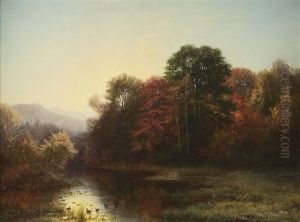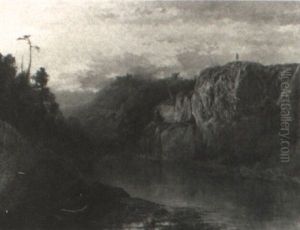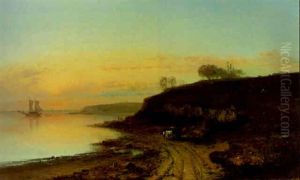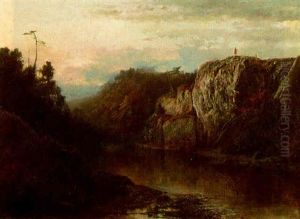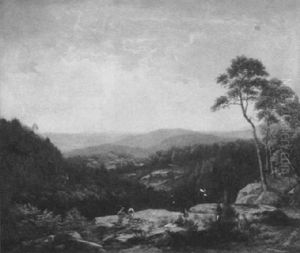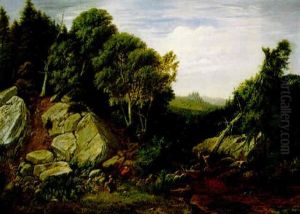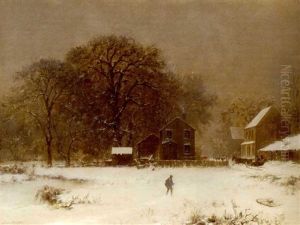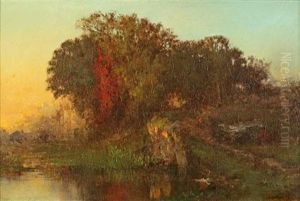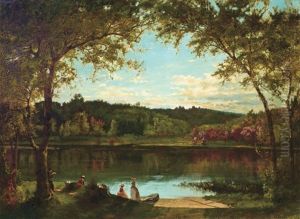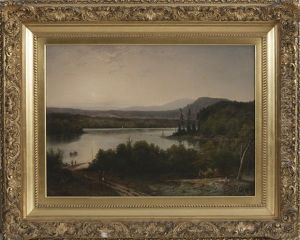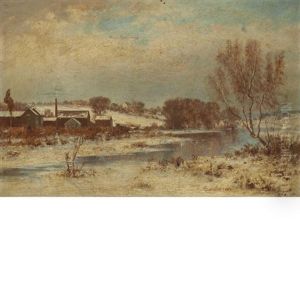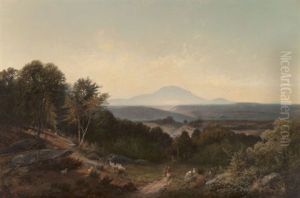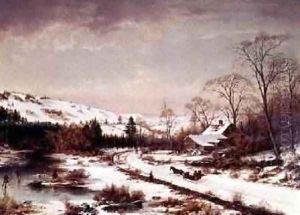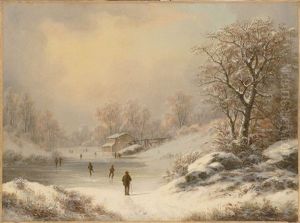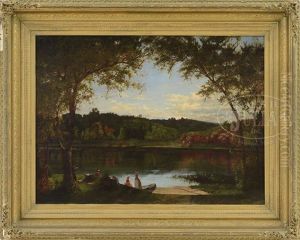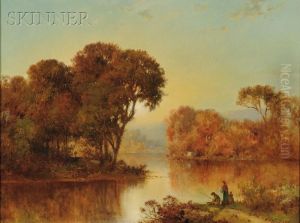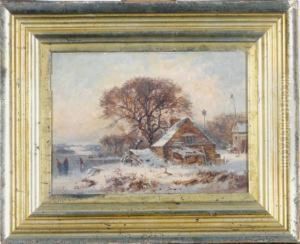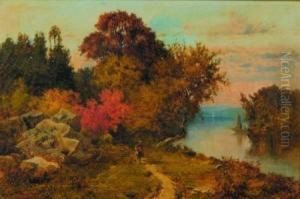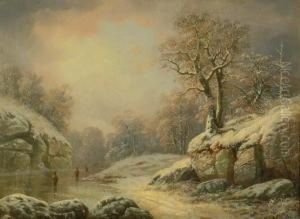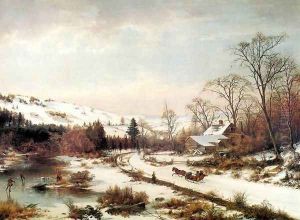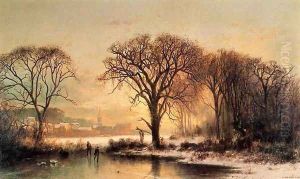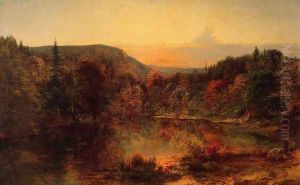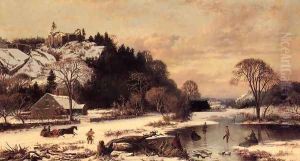Joseph Morviller Paintings
Joseph Morviller was a 19th-century Polish painter known for his landscape paintings and contribution to the development of Polish Romanticism in art. Born on September 15, 1800, in Warsaw, then part of the Polish-Lithuanian Commonwealth, Morviller grew up during a time of great political unrest that would eventually lead to the partitions of Poland among its more powerful neighbors.
Trained at the Warsaw School of Drawing, Morviller was a student of the renowned Polish painters Aleksander Orłowski and Michał Płoński. During his formative years, he was significantly influenced by the picturesque and sentimental aspects of Romanticism, which was sweeping through European artistic circles. His work often depicted the Polish countryside, imbued with a sense of national pride and an emphasis on the beauty of Poland’s natural landscapes.
Morviller's career as an artist flourished in the 1820s and 1830s, a period marked by the November Uprising of 1830, an armed rebellion against the Russian Empire's rule in Poland. Although it is not clear how directly involved he was in the political events of his time, the nationalistic fervor of the era undoubtedly impacted his art. His landscapes from this period not only celebrate the beauty of the Polish terrain but also serve as a form of subtle resistance to the erasure of Polish national identity by the occupying powers.
By the 1840s, Joseph Morviller had established himself as one of the prominent landscape artists in Poland. His paintings were characterized by meticulous attention to detail, a harmonious palette, and a romantic sensibility that captured the ephemeral qualities of light and atmosphere. He was not only a painter but also a teacher, passing on his knowledge and skills to a new generation of Polish artists.
Joseph Morviller's contributions to Polish art were cut short by his death on April 29, 1870, in Warsaw. Despite the relatively limited recognition outside his home country, within Poland, his work remains celebrated for its artistic merit and patriotic significance. His paintings can be found in various Polish museums and continue to be studied for their historical and cultural value as well as their aesthetic achievements.
